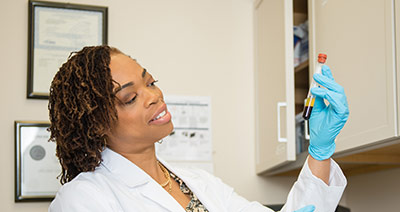Treating Large Prostates (>80g) for BPH

Benign Prostatic Hyperplasia (BPH) or enlarged prostate is a concern that most men will experience as they age. On average, about 50% of men over 50 and 80% of men over 80 will experience the lower urinary tract symptoms associated with prostatic enlargement. Because of the nature of this condition, many novel procedures have tried to address the limitations of their predecessors. Some have succeeded, while others have fallen out of favor.
In the absence of more serious medical complications, Dr. Engel always focuses on medical therapy as a first line of treatment for most cases of an enlarged prostate. However, if initial medical therapy does not offer the relief the patient expects, if there are side effects, or if the patient simply does not want to be on chronic medication, we often move on to offering minimally invasive BPH therapies that can be quick, effective, and have minimal side effects. However, some patients will need surgical intervention such as robotic simple prostatectomy or HoLEP (Holmium laser enucleation of the prostate) as the procedure of choice when the prostatic enlargement is extreme. The prostate is measured in grams; we consider a large prostate to be anything over 80g, and Dr. Engel has treated prostates of up to 400g.
There Are Three Major Procedures to Address Larger Prostates
The robotic simple prostatectomy involves the urologic surgeon removing the center portion of the prostate, known as the adenoma while leaving the outer capsule intact. This is performed in a minimally invasive, robotically assisted surgery through tiny incisions in the abdomen. The learning curve is significant, but in the hands of an experienced surgeon like Dr. Engel, patients can achieve relief about 95% of the time. It is also long-lasting, with most patients enjoying the procedure’s results for the rest of their lives.
An alternative to a robotic simple prostatectomy is HoLEP or Holmium laser enucleation of the prostate. This procedure is like a robotic simple prostatectomy in that it offers relief but uses a focused laser to separate the adenoma from the capsule. The procedure is performed endoscopically, meaning the device is inserted through the penis with no abdominal incisions at all.
The decision to undergo a robotic prostatectomy versus a HoLEP is based upon a comprehensive consultation with a urologic surgeon. Rarely do experienced surgeons perform both because they have very similar results, with each approach having pros and cons. Both are minimally invasive and in highly experienced hands, both should have similar recovery times and outcomes. Typically, a surgeon will specialize in one, as Dr. Engel does with the simple prostatectomy. Generally, each surgeon will have a few referring urologists adept in either approach.
More recently, however, a new BPH treatment, Aquablation, has been introduced. This procedure involves an automated robotic arm using a high-pressure water jet to remove excess prostatic tissue. In theory, this is an excellent option; however, in practice, the procedure has significant drawbacks, with the primary one being a far increased risk of substantial bleeding, even needing emergent repeat surgery to control it. Secondarily, there would be little reason to expect the same long-term outcome from Aquablation as one sees with Robotic Simple Prostatectomy or HOLEP. For these reasons, Dr. Engel doesn’t perform the Aquablation procedure regularly nor endorse it for most patients.
Ultimately, while there are risks with any surgical or even laser treatments, most patients with very large prostates see significant relief with few major complications. As such, Dr. Engel will typically recommend a simple prostatectomy when needed. If the patient requests a laser procedure, he is pleased to refer them to a trusted urologic surgeon in Washington, DC, who specializes in HoLEP. Once educated on the near equivalency of each approach, nearly all opt for the robotic approach with Dr. Engel.
While the options for treating a large prostate are not as varied as those under 80g, plenty of options can be discussed at a consultation with Dr. Engel. Most importantly, patients should not resign to living with Lower Urinary Tract Symptoms due to BPH, as viable, safe, and effective alternatives are readily available today.





